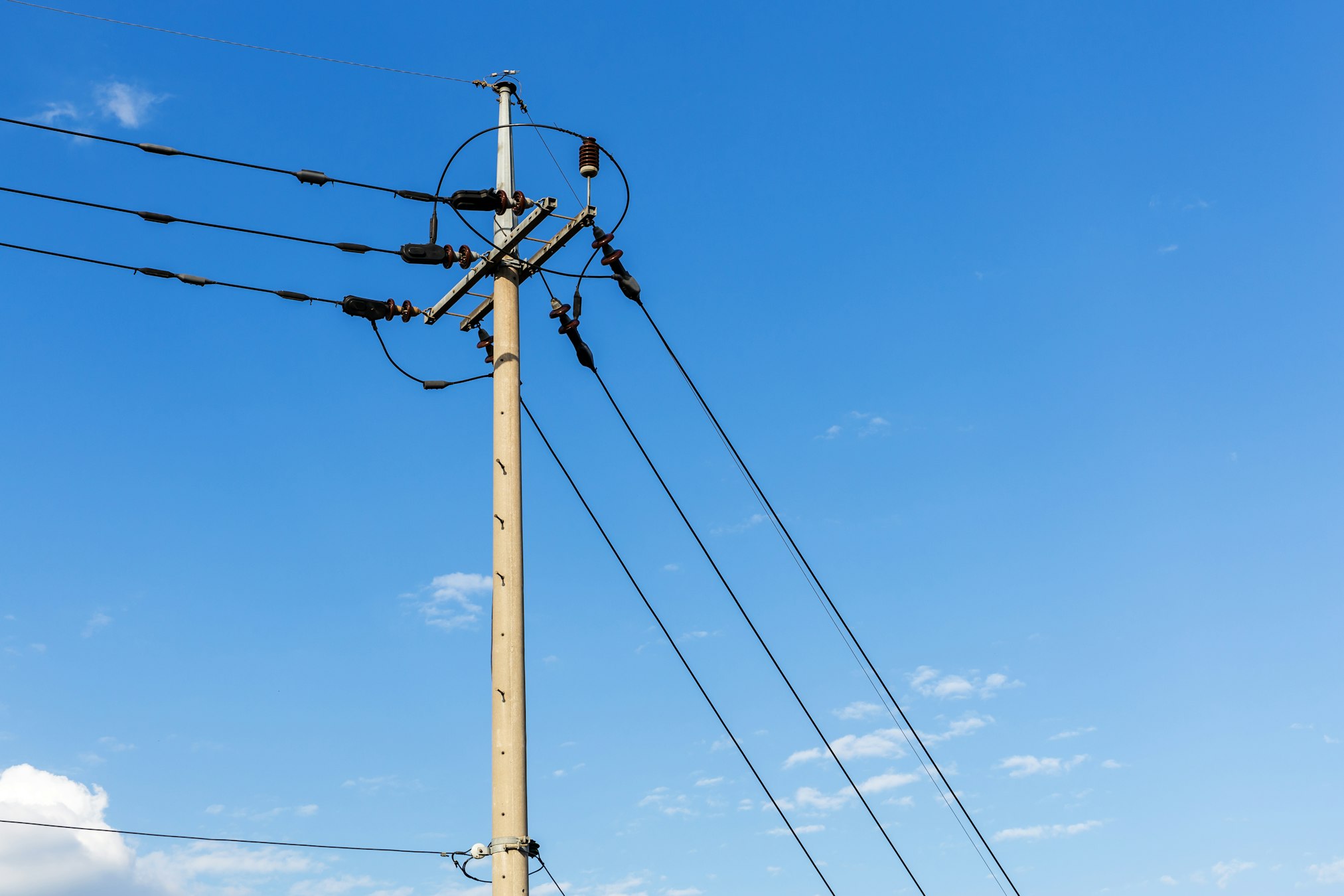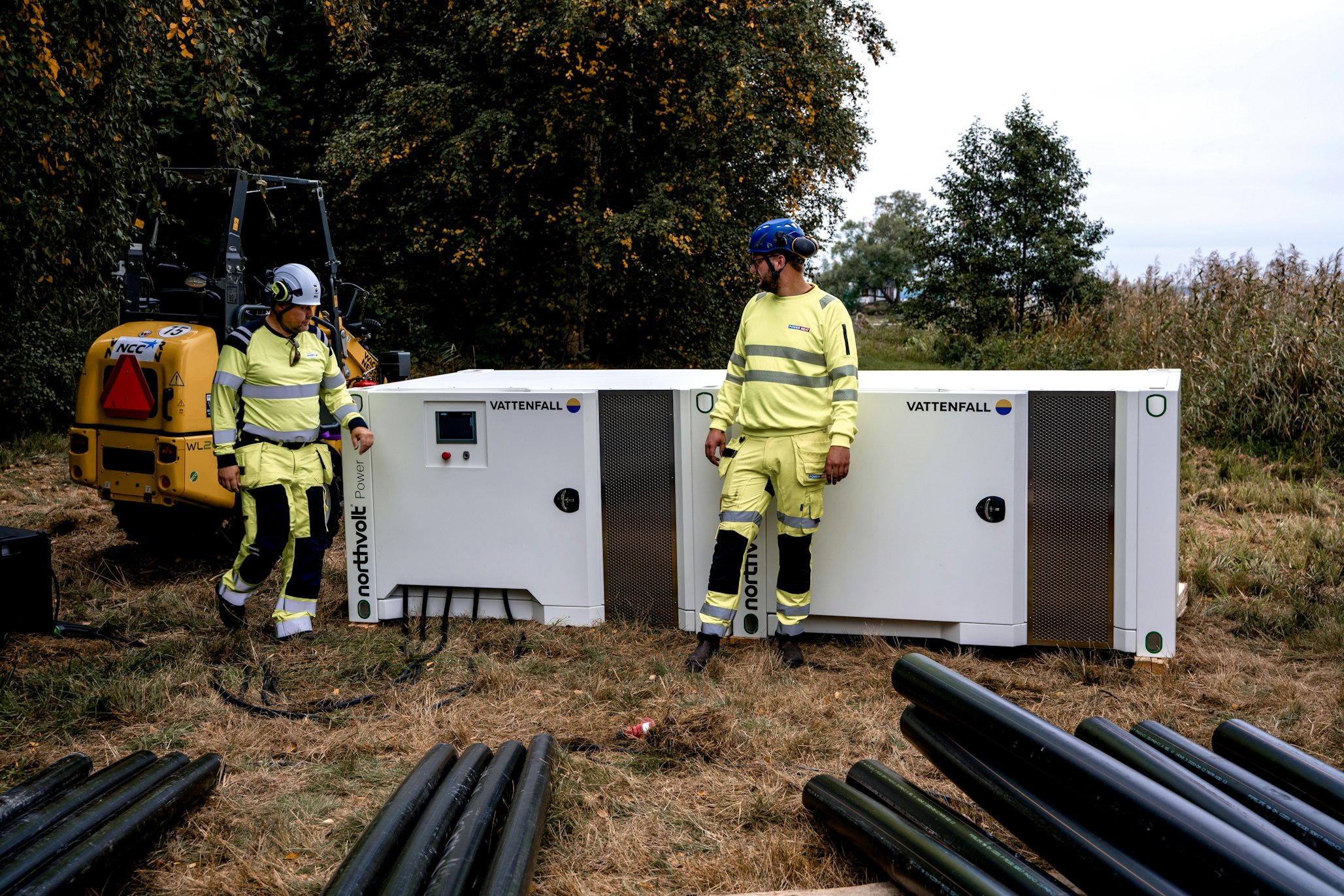Battery enabled electricity grid maintenance
18 February, 2022
Electricity grids are the backbone of modern society – but they’re not without need for occasional maintenance or upgrade. When this happens, power must be shut off. When that happens, power continuity for consumers is typically provided for with diesel generators. We have a better solution.

Keeping the lights on
Distribution utilities are the companies responsible for ensuring that electricity flows from the main power lines into power outlets of residential buildings, offices and coffee shops. Thankfully, the vast majority of the time power is available when we need it and outages in western Europe are rare.
But electricity grids do require maintenance from time-to-time. And increasingly, more substantial work is required to upgrade and reinforce the grid – work that might include laying more cables, upgrading substations, or extending lines.
When this kind of work is required, local sections of the grid must be powered down and customers are cut off from their regular supply of electricity. The conventional solution to this is to deploy a diesel generator, fire it up and supply electricity.
It’s not ideal. Even a modern diesel generator pumps out vast quantities of carbon dioxide and polluting particulates.
But there is another way… a cleaner way.
Instead of a diesel generator, a battery energy storage solution can be quickly deployed to provide temporary power. The benefits? Zero emissions and no noise. The battery can keep the lights on at home or in the office, while maintenance work proceeds. Should works extend in time and additional energy is required, simply rotate batteries with fresh ones.
The battery can even provide power to any work equipment or machines which require it – an increasingly common circumstance as construction industries shift over to electric solutions.
Avoiding emissions
Diesel generators come in all manner of kinds, varying in their efficiency, fuel consumption, level of pollution and noise. But even a modern generator used for the kinds of work described above might be a 250 KVA machine, typically operating at low partial loads and consuming 30 to 40 liters of fuel per hour (assuming a 50% load).
At that rate, the machine could release 500 kg carbon dioxide or more into the local environment over just five hours of work. That’s about the same amount as mid-range passenger car emits driving 4000 km. And considering the frequency of these kinds of operations, and how widespread they are, these environmental costs add up.
If distribution grid operators are serious about transitioning a decarbonized future and increasing the use of renewable energy, they best also look at activities they engage in to keep those grids operating. Until we stop using diesel generators, while sustainable alternative solutions exist, we keep a decarbonized society a distant goal.
And sustainable alternatives do exist. Battery energy storage is often thought of as a stationary asset; something built into a location to remain static for its lifetime. But not all battery systems are built this way. Voltpack Mobile System is a good example – it’s designed and built for rapid redeployment. Robust against the elements and rigours of transportation, and more than capable of replacing diesel generators operating in the scenario described above.
It’s quiet and simple to operate. Zero emissions as standard.

Introducing Voltpack Mobile System
The Voltpack Mobile System required for such an operation would consist of a central hub, containing an operating interface, power electronics and the battery protection system, and three Voltpack Mobile units, each containing the batteries and their thermal management units. Altogether, the system would occupy a surface area smaller than a Tesla Model Y.
Both the hub and battery units are designed for easy transport. Within 30 minutes of deployment, the Voltpack Mobile System can be connected and powering an Islanded electrical grid allowing for a truly plug-and-play experience for operators. Should delays in the works occur and further operation time be required, then more Voltpack Mobile units can be brought to site to extend the working hours.
The entire operation can also be monitored remotely, allowing not only operators on the ground but also centrally located planners to track the performance of the battery system in real-time. Battery connectivity like this allows for continuously improving the performance of batteries deployed in the field. Most importantly, it facilitates faster roll out of a novel technology by enabling in-field operators and remote in-house experts to collaborate.
Find out more about Voltpack Mobile System.